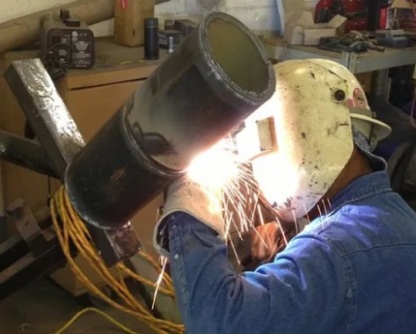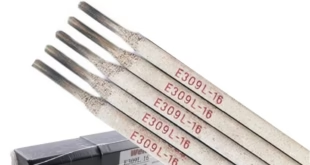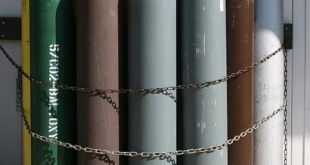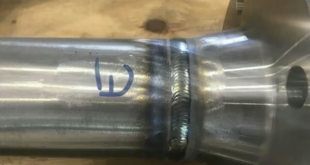Welder Qualification Ranges Explained (WPS/PQR/WPQ): Thickness, Positions, Backing
Suppose you’ve ever stood at the whiteboard trying to translate code tables into shop reality. In that case, you already know “welder qualification ranges” are the heart of getting people legally and safely onto the job. This guide unpacks how thickness, positions, backing, and diameter interact across WPS, PQR, and WPQ so you can plan tests that maximize production coverage while staying tight to the code.
Why “Welder Qualification Ranges” Matter
Ranges vs. real-world production scope
A qualification is not just a pass/fail; it defines a useable window—thickness, position, diameter, backing, and sometimes process nuances—within which a welder may legally deposit weld metal in production. Misreading those windows can push a project out of compliance or force costly re-tests.
Avoiding nonconformances and costly re-tests
A cleverly designed test can cover most of your work. A poorly designed one might qualify a welder for a narrow slice—leaving you scrambling mid-project. Planning with the code tables in hand is money in the bank.

The Three Pillars — WPS, PQR, and WPQ
WPS: What you are allowed to do in production
The Welding Procedure Specification (WPS) is the recipe: process, base metals, filler, preheat, interpass, electrical parameters, travel speed ranges, backing, positions, etc. It tells production what’s permitted for a given weld.
PQR: How you prove the WPS works
The Procedure Qualification Record (PQR) is the lab notebook that proves the recipe works. You weld a test coupon under controlled variables, test it, and—if it passes—derive procedure ranges (e.g., thicknesses, base-metal groupings, etc.) for the WPS from code tables.
WPQ/WQTR: How the individual welder is qualified
The Welder Performance Qualification (WPQ)—often recorded on a WQTR—demonstrates the person can make sound welds within a bounded window: process, thickness of deposit, position(s), diameter, and backing status. These are the welder qualification ranges you apply day-to-day. In ASME IX, performance variables and their limits live in QW-350/QW-452/QW-461 tables.
Code Families & Where Ranges Come From
ASME Section IX (process-agnostic manufacturing)
ASME IX is widely used in pressure equipment and piping. It defines procedure and performance qualification logic—how coupon thickness maps to qualified thickness, how positions map to allowed production positions, when backing changes are essential, and how pipe diameter limits apply.
AWS D1.1 (structural steel)
AWS D1.1 also sets welder and procedure ranges but often uses different breakpoints and tables (e.g., Table 4.x series). Many structural shops qualify welders and procedures directly to D1.1 rather than ASME IX. Details differ (e.g., acceptance testing and some range thresholds), so don’t “port” ranges across codes without checking the specific table.
ISO 9606-1 (international welder qualifications)
ISO 9606-1 is Europe’s go-to for arc-welder qualifications, with its own logic for thickness, positions, product types, and ranges. If you work globally, align your program with the target code and don’t mix clauses.
Thickness Qualification — Procedure vs. Welder
Procedure (PQR/WPS) thickness logic (base & deposit)
For procedures, ASME IX derives base-metal thickness ranges and deposit thickness ranges from the coupon thickness using Table QW-451.1 and QW-451.2. The idea: thinner coupons qualify a narrower band; thicker coupons qualify more (eventually to “unlimited”). Always read the current edition; the table maps the coupon thickness T to the permitted production ranges of base metal and weld deposit on your WPS.
Tip: Don’t confuse procedure ranges with welder ranges—they are different tables in ASME IX. A PQR on 1-in plate may yield broad WPS thickness ranges, but each welder still must be qualified for their own performance thickness window.
Welder (WPQ) thickness logic — the “2t / unlimited” rule
For performance, ASME IX drives from Table QW-452.1(b). In short:
If the weld metal thickness deposited (t) on the test coupon is < 1/2 in (13 mm), the welder is qualified up to 2t in production.
If t ≥ 1/2 in (13 mm) and the welder deposited a minimum of three layers, the welder is qualified to weld maximum (unlimited) thickness.
This is the practical “2t or unlimited” rule that controls welder thickness coverage.
Worked examples for common coupons (3/8, 1/2, 1 in.)
3/8-in (9.5 mm) groove coupon, single process, three layers:
Weld metal deposited (t) ≈ 3/8 in → Production qualified thickness = up to 3/4 in (2t).1/2-in (13 mm) groove coupon with ≥3 layers:
Since t ≥ 1/2 in and layering requirement is met → Unlimited thickness qualified.1-in (25 mm) coupon:
You’ll meet the three-layer threshold. Result: Unlimited thickness qualified.
Position Qualification — What Each Test Position Buys You
1G, 2G, 3G, 4G plate; 1G, 2G, 5G, 6G pipe
Positions are defined by ASME figures (QW-461 series). Tests are performed in specific positions; production positions are unlocked according to Table QW-461.9. For example, a 4G plate test typically qualifies flat and overhead groove positions on plate and on pipe over 24-in OD, while 3G + 4G together qualify flat, vertical, and overhead groove positions on plate (and broader coverage on pipe). The 6G pipe test is the all-rounder that qualifies all positions (within diameter limits).
Combinations (e.g., 3G + 4G) vs. 6G
If your shop does mostly plate in multiple positions, a 3G + 4G combo is often efficient. For piping and versatility, 6G is king because it simulates the hardest geometry—inclined pipe with changing gravity effects—unlocking all positions (subject to diameter limits below).
Plate vs. pipe over/under 24 in OD nuances
ASME IX makes a distinction between pipe > 24 in OD and ≤ 24 in OD in Table QW-461.9. Don’t forget to check which columns apply when you translate a test on plate to pipe (or vice versa). That note is easy to miss—and can invalidate your assignment if misread.
Backing, Open-Root, and Back-Gouging
When adding/removing backing is an essential variable
In ASME IX, adding or removing backing is an essential variable at both the procedure and performance level. Changing from a backed joint to an open-root joint (or vice versa) without appropriate qualification is not permitted. See QW-402 entries and the process-specific variable tables (QW-353 through QW-356).
What a welder qualified “without backing” can do
A common rule of thumb in ASME IX practice: a welder qualified without backing (open-root) is considered to have demonstrated a more demanding technique and is usable with or without backing. A welder qualified with backing is not qualified to weld open-root joints unless specifically tested. Always document the backing status on the WPQ.
Backing vs. double-sided welds (back-gouged)
ASME treats double-sided groove welds (properly back-gouged and welded from the second side) as welding with backing for essential-variable purposes. This matters when reading WPS/PQR/WPQ wording.
Diameter Ranges for Pipe & Tube
What a 2-in, 3-in, or 6-in pipe test qualifies
Diameter coverage for welder performance is set by Table QW-452.3:
If you test on < 1 in (25 mm) OD, you’re qualified for the size welded and up to unlimited.
If you test on 1 to 2-7/8 in (25–73 mm) OD, you’re qualified from 1 in to unlimited.
If you test on > 2-7/8 in (73 mm) OD, you’re qualified from 2-7/8 in to unlimited.
Those thresholds are crucial for small-bore work; pick your test diameter accordingly.
Small-diameter special cases
Fillet-only work on small OD has its own test path (Tables QW-452.4/452.5/452.6). If you qualify on a groove weld, ASME IX says fillets are covered (see QW-452.6)—handy for generalists.
Process, F-Numbers, P-Numbers & the Practical Impact on Ranges
Why P-Number changes affect WPS, but not WPQ directly
P-Numbers group base metals by weldability for procedures. A WPS typically covers a P-Number to P-Number combination proven by PQR. For welder performance, what matters more are positions, thickness, backing, diameter, and F-Numbers; the WPQ doesn’t limit you to a specific P-Number unless your client/spec adds that restriction.
F-Numbers on the WPQ and what they control
F-Numbers are about filler handling characteristics. Many processes tie the welder’s performance qualification to an F-Number range (see QW-353 through QW-356). If you switch F-Numbers outside the qualified range, you may need to requalify.
Strategy: Designing Tests That Maximize Welder Qualification Ranges
Selecting coupon thickness, positions, diameter
Thickness: Aim for ≥ 1/2 in weld metal with ≥ 3 layers to achieve unlimited thickness on the WPQ.
Positions: For plate-heavy scopes, the 3G + 4G combo opens flat/vertical/overhead. For piping and mixed positions, a 6G test is the most expansive.
Diameter: If your shop does both small-bore and large-bore, test at > 2-7/8 in OD to unlock 2-7/8 in to unlimited; add a 1–2-7/8 in test if small-bore is critical.
Choosing backing/open-root to widen scope
Testing without backing (open-root) expands usability to both backed and open-root joints (ASME practice). That single choice can prevent mid-project re-tests when open-root welds appear in the workpack. Document root backing status clearly.
Combining processes (multi-process coupons)
When multiple processes are used in one test coupon, you must record the thickness deposited by each process and by each welder. The 2t/unlimited rule is then applied per process, per welder. This is an easy place to make paperwork mistakes—track pass maps and deposition thickness carefully.
Continuity, Expiration, and Renewal
The 6-month continuity rule and how to maintain it
ASME IX requires that a welder use the qualified process at least once every 6 months to maintain validity. Your quality system must verify continuity (logbook, weld maps, continuity forms).
How renewal works if continuity is lost
If a qualification lapses, ASME IX allows renewal by welding a single test coupon (any material, thickness, diameter, position) and completing the required tests. Passing renews previous ranges for that process.
Acceptance Tests & What Changes Trigger Requalification
Bend vs. volumetric NDE and thickness limits
ASME IX lets you qualify by bends or volumetric NDE of a coupon (or initial production weld), with some thickness caveats. If you used RT/UT to qualify, maximum thickness limits in Table QW-452.1(b) still apply for welder performance unless otherwise permitted.
Essential variables that force a new test
Classics that trigger requalification for welders include:
Position changes (QW-405)
Backing status changes (QW-402)
Pipe diameter outside the qualified range (QW-403.16 + Table QW-452.3)
Significant changes in deposited thickness (QW-404.30)
Always cross-check the process-specific table for your process (SMAW, GMAW/FCAW, GTAW, etc.).
Common Pitfalls & Quick Audit Checklist
Five frequent mistakes (with fixes)
Mixing up WPS vs. WPQ ranges.
Fix: Remember: PQR/WPS thickness ranges come from QW-451.x; welder thickness ranges come from QW-452.1(b).Ignoring diameter limits.
Fix: Always apply QW-452.3 before assigning pipe work.Forgetting backing status.
Fix: If you need open-root production, qualify without backing. Log it on the WPQ.Assuming a plate test unlocks all pipe positions.
Fix: Check QW-461.9 and the pipe diameter columns.Losing continuity.
Fix: Maintain 6-month logs and prompt reminders.
A one-page verification flow before releasing a welder
Is the process correct?
Do positions on WPQ cover the job?
Do thickness and diameter ranges cover the WPS scope?
Does backing status match production?
Is continuity current?
Practical Cheat Sheet (Examples You Can Copy)
Example WPQ ranges (SMAW, 1/2-in, 6G, open-root)
Process: SMAW
Coupon: 1/2-in (13 mm) pipe in 6G, open-root, ≥ 3 layers
Welder ranges:
Thickness: Unlimited (t ≥ 1/2 in with ≥ 3 layers)
Positions: All (6G) per Table QW-461.9 (within diameter range)
Diameter: If test OD > 2-7/8 in, production OD ≥ 2-7/8 in to unlimited (Table QW-452.3)
Backing: Qualified without backing → usable with or without backing
Example WPS scope from a 1-in PQR for carbon steel (GMAW-P)
Procedure coupon: 1-in (25 mm) plate, single-V, spray-transfer GMAW-P
Derived WPS ranges: Per QW-451.1/451.2, you’ll have broad base-metal and deposit ranges (often up to unlimited), contingent on your exact test variables and code edition. Add positions, backing status, transfer mode, and gas as essential variables. (Check your current ASME IX tables.)
FAQs
What’s the fastest way to get a welder “unlimited” on thickness?
Qualify on a coupon where the deposited weld metal thickness is ≥ 1/2 in (13 mm) with at least three layers; ASME IX then grants unlimited thickness for performance.
Does a 6G pipe test always qualify all positions?
Yes—within diameter limits, a 6G test qualifies all positions per ASME IX’s position table. Always verify the pipe OD column and any project-specific restrictions.
If my welder passed with backing, can they weld open-root joints?
Not by default. Backing status is an essential variable. A welder tested with backing is not qualified for open-root unless the qualification specifically covered it. Testing without backing gives you broader usability.
How do pipe diameters on the test coupon affect what I can assign?
ASME IX QW-452.3 sets the ranges. For example, a test on > 2-7/8 in OD covers 2-7/8 in to unlimited in production; smaller test ODs have different minimums.
How do I keep welder qualifications from expiring?
Ensure each welder uses the qualified process at least once every 6 months and keep documented continuity. If a lapse occurs, renewal is possible with one new test coupon and required testing.
Conclusion
When people say “welder qualification ranges,” they usually mean the WPQ windows—thickness, positions, diameters, and backing—that gate who can weld what. But you only get consistent, code-compliant coverage when all three pillars align: a WPS with valid ranges (from a PQR) and a welder whose WPQ ranges overlap the job’s demands. Use the 2t/unlimited performance rule strategically, choose positions (3G+4G or 6G) to unlock the right work, pay attention to backing and diameter tables, and keep continuity tight. Do that, and you’ll spend more time teaching great technique—and less time chasing paperwork.
 Welding of Welders All about Welding and Welders
Welding of Welders All about Welding and Welders



